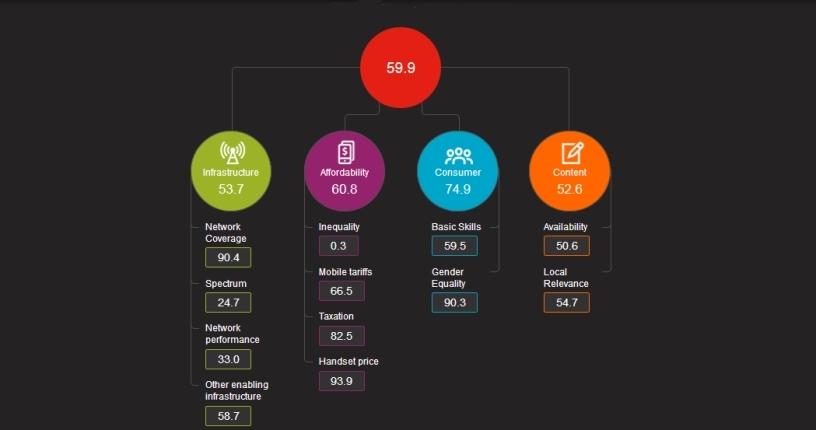
Although mobile Internet connectivity is regarded as crucial to economic growth and development, more than half of the world's population remains without access.
This is according to the latest Mobile Connectivity Index compiled by the GSM Association (GSMA), which reveals four billion people do not have access to mobile broadband services.
The majority of people (3.9 billion) that remain unconnected live in developing nations, it states.
The GSMA index is an analytical tool used to measure and track the performance of 163 countries, representing 99% of the world's population, against four key enablers of mobile Internet adoption. The key enablers are infrastructure, affordability, consumer readiness, and content and services.
Scores for each of the four key enablers are combined to produce a single composite measure for a given country of the strength of the foundations to support widespread adoption of the mobile Internet.
In terms of the latest findings, 44% (3.3 billion) of the global population were connected to the mobile Internet, representing an increase of almost 300 million compared to the previous year.
However, the above number represents less than half of the world's population, showing the majority of people still remain offline.
The index highlights mobile broadband networks still do not cover one billion people globally, and approximately three billion people who live within the footprint of a network are not currently accessing mobile Internet services.
In low-income countries, around two-thirds of rural populations are not covered by 3G networks, it adds.
"If mobile operators don't get affordable and predictable access to spectrum, it will be consumers who will suffer the most," says Pau Castells, director of economic analysis at GSMA Intelligence.
"Developing countries have the opportunity to catch up with the developed on mobile adoption; however, the investment case in some of these markets is being put at risk. Operators cannot keep paying significantly more for spectrum when consumer incomes and expected profits are much lower in these markets. This is making network investment challenging at a time when policies should encourage the development of the mobile sector to maximise the benefits it can bring to everyone."
The GSMA is of the view that in developing markets, where widespread deployment of fixed access networks is often not economically viable, mobile will have an even more important role to play in bringing the Internet to the unconnected population.
The association notes affordability and quality of mobile broadband services, and network investment are important factors in connecting people.
On the rise
Over the last few years, SA's overall index score has been on a steady rise.
While the country's index score was 52.67 in 2014, the latest results show a score of 59.9. The score places SA at the number 90 ranking, making the country one of only three developing African nations in the top 100.
South Africa, Mauritius and Tunisia are ranked 90, 72 and 87 respectively, out of 163 countries measured for the index.

The index's key metrics show 3G coverage for the South African population stands at 99.4%, total mobile penetration sits at 156.7% and mobile broadband connections have reached the 90.3% mark.
This seems to back findings from the latest Statistics South Africa (Stats SA) General Household Survey, which indicates more people are going online using mobile phones.
In SA, 88.2% of households had access to at least one cellphone in 2017, up from 87% the year before.
The survey found mobile access to the Internet has made it much more accessible to households in rural areas. Nationally, 56.9% of households access the Internet using mobile devices, which was far higher than those that access the Internet at home (10.5%), at work (16.9%) and elsewhere (11.5%). The national average of 56.9% was also an improvement compared to the 53.9% of households that accessed the Internet using mobile devices in 2016.
Although the use of mobile Internet access devices in rural areas (39.6%) still lags behind use in metros (65%) and urban areas (61.5%), Stats SA found it is much more common in rural areas than any of the alternative methods.
Share